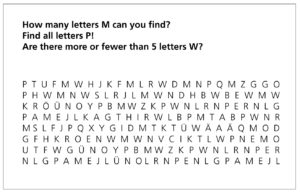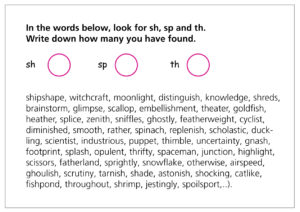Procedure:
The goal of identifying graphemes in the first language- most of those
that students do not know based on their school language should be automated as much as possible and can be pursued with various exercises. Examples:
- Collecting letters (see exercise a; the tasks can also be modified according to needs).
- Assembling letters. Ideal for this exercise are two or three strips of paper with the alphabet legibly written on them. The strips can be placed next to each other or one on top of the other and moved about in a way that produces new combinations of letters.
- Recognize letter combinations quickly (see exercise b).
- Combining syllables (works well also with strips of paper as described above in “assembling letters”).
- Reading unusual typefaces (for this exercise, the teacher can convert a text into different font types).
Remarks:
- The graphemes, which are not taught in regular classroom instruction, naturally play a significant role in this type of exercise. See also chapter 1a in the introduction.
- Many exercises are also suitable for working with a partner.
- Many of the required exercise sheets can also be prepared by older students for the younger ones.
- These kinds of exercises can also be used with older students if they still experience difficulties with identifying graphemes in their first language.
Exercise a)

Exercise b)







